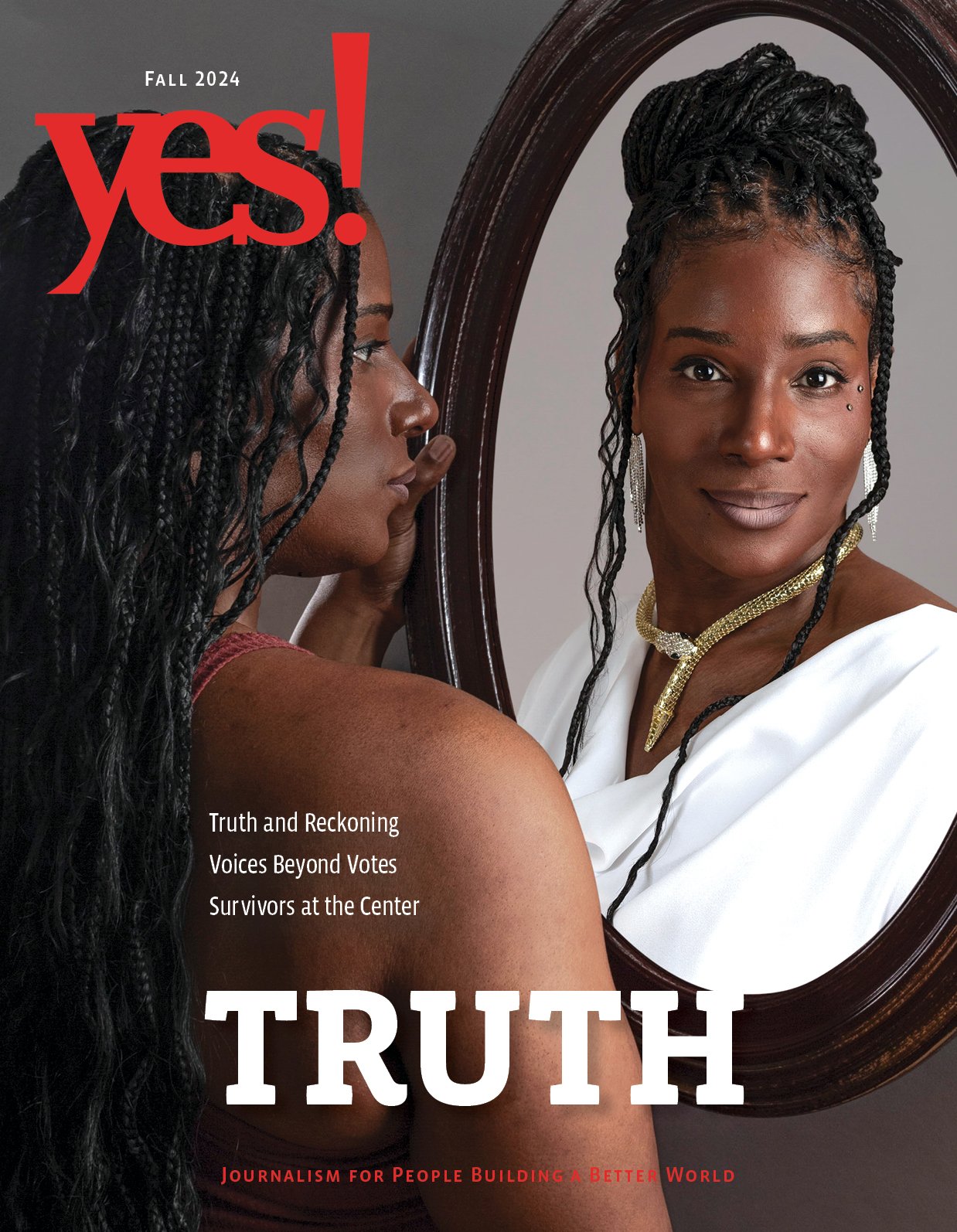
Students will read and respond to the YES! article “Native and European–How do I Honor All Parts of Myself?” by Kayla DeVault.
In this article, Native American author Kayla DeVault writes about growing up and honoring all parts of her cultural and ancestral background that includes Shawnee, Anishinaabe, Eastern European, Scottish, and Irish. She explains that simply saying “I am this” isn’t enough. To truly honor her heritage, she found that she must understand and participate in it through rituals like preparing traditional foods with grandmas and aunties, and by exploring family history.
YES! Article and Writing Prompt
Read the YES! article by Kayla DeVault “Native and European–How do I Honor All Parts of Myself?”
Writing Prompt:
What do you consider your ancestral or ethnic identities? How connected are you to all of these parts? Describe how you honor and participate (or not) in them. Like DeVault, do you find yourself wanting to explore parts of your identity that you feel disconnected from or know little about?*
*Some students who are adopted, fostered, moved between households in divorce or come from other situations may not feel comfortable writing about their ancestral identity. They are welcome to write about their other identities, such as gender, sexual, religious or economic class, instead.
Writing Guidelines
The writing guidelines below are intended to be just that—a guide. Please adapt to fit your curriculum.
· Provide an original essay title
· Reference the article
· Limit the essay to no more than 600 words
· Pay attention to grammar and organization
· Be original. provide personal examples and insights
· Demonstrate clarity of content and ideas
· This writing exercise meets several Common Core State Standards for grades 6-12, including W. 9-10.3 and W. 9-10.14 for Writing, and RI. 9-10 and RI. 9-10.2 for Reading: Informational Text.*
*This standard applies to other grade levels. “9-10” is used as an example.
Sample Essays
The essays below were selected as winners for the fall 2019 YES! National Student Writing Competition. Please use them as sample essays or mentor text. The ideas, structure, and writing style of these essays may provide inspiration for your own students’ writing—and an excellent platform for analysis and discussion.
Brazil: My Heart’s Home by Susanna Audi, grade 8. Read Susanna’s essay about how living in the U.S. makes her feel isolated from her Brazilian family, their kisses on the cheeks, and the rhythm of samba on hand-beaten drums.
Carrying the Torch by Madison Greene, university. Read Madison’s essay about how she has learned to unapologetically embrace and explore her “pizza bagel” Catholic-Jewish identity.
Tying the Knot by Cherry Guo, grade 12. Read Cherry’s essay about reclaiming her Chinese identity through language and food after years of defiantly asking her brother in English to pass the green beans.
Walking Through the Forest of Culture by Keon Tindle, grade 11. Read Keon’s essay about his Black identity and how Black history is conveniently left out of textbooks, chained to whitewashed images.
What Being Part of the LGBTQ+ Community Means to Me by Mia De Haan, university. Read Mia’s essay about being proud of her queer identity but also being scared.
A True Irishman? by Reese Martin, grade 11. Read Reese’s essay about growing up with Irish folk music, laughter, and all things green, only to find out her identity was not what she originally thought after aunts and cousins took 23andMe and Ancestry DNA tests.
Behind My Skin by Mariela Alschuler, grade 7. Read Mariela’s essay about how sticks out like a sore thumb with both sets of grandparents—a wealthy, Jewish grandmother and grandfather from Massachusetts and a working-class second-generation Dominican abuela and abuelo from the Bronx.
We Want to Hear From You!
How do you see this lesson fitting in your curriculum? Already tried it? Tell us—and other teachers—how the lesson worked for you and your students.
Please leave your comments below, including what grade you teach.



